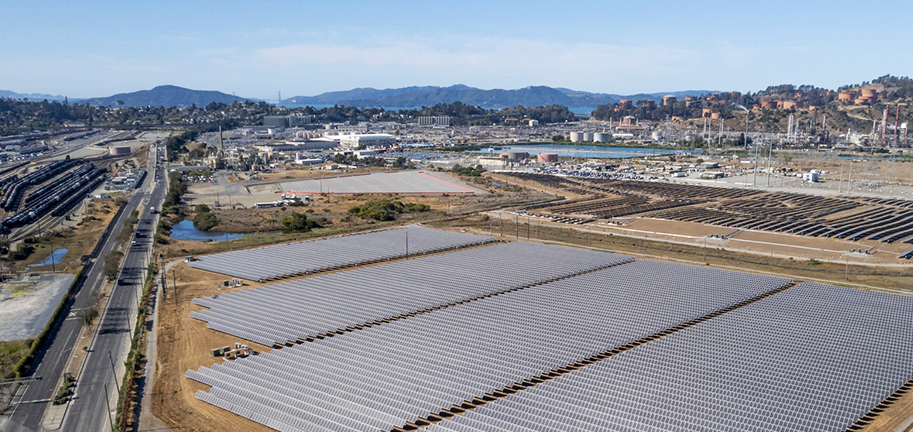One of Fluence’s Philippines projects for SMC. Image: Fluence.
The first 500MWh of a battery storage portfolio for SMC Global Power, a wholly owned subsidiary of major Philippines holding company San Miguel Corporation, has been installed.
According to a report by newspaper Manilla Standard, the company announced it had reached the halfway point in its rollout of 1,000MW/1,000MWh of battery energy storage systems yesterday (30 June 2022).
The system will provide grid balancing services to electricity networks on islands in the Southeast Asian country, such as frequency response, reserve power and voltage regulation.
The Standard quoted San Miguel Corporation president Ramon Ang as having said installed capacity will reach 700MWh by the end of 2022 and all 31 facilities in the pipeline will be completed “within 12 months”.
Energy-Storage.news reached out to San Miguel Corporation – one of the Philippines’ largest privately-owned entities – to enquire about the news and for further details but is yet to receive a reply.
What is known however is that installation of about 80MW/80MWh of the first battery energy storage systems (BESS) in the portfolio was completed and announced last June.
A 20MW/20MWh system delivered by global system integrator Fluence was then entered into commercial operations at the beginning of this year. Fluence supplied, installed and commissioned the system on a turnkey engineering, procurement and construction (EPC) contract basis.
Fluence had revealed it was contracted to deliver 470MW/470MWh of the initial buildout, which SMC said it was investing around US$1 billion into, while other companies known to be working on projects include Wärtsilä and ABB.
SMC: Total progress at 61% as of end of May
SMC has progressed project development quickly. Having been the first company to deploy a large-scale BESS of 10MW/10MWh in the country, at the site of a coal plant it owns, it said in April 2021 that it aimed to build projects in the new portfolio “simultaneously”.
In a prospectus filed with the Philippines Securities and Exchange Commission (SEC) at the end of May this year, SMC Global Power noted that its diversified energy portfolio stood at 4,734MW, comprising assets including natural gas, coal, renewable energy and battery energy storage systems.
This is equal to 19% of capacity on the National Grid, 26% of capacity on the grid of the island of Luzon and 7% of capacity on Mindanao’s grid.
SMC noted that the 20MW Masinloc BESS project which Fluence completed entered into a five-year ancillary services agreement with National Grid Corporation from January. It is expected that similar contracts will be entered into over the coming months for the next projects.
As of the end of April, nearly all of the equipment required for the 1,000MW portfolio had been delivered to project sites, including 860MWh of battery modules and 690MWh of inverters. While the amount of energy capacity installed has reached 500MWh, actual project completion for the portfolio was at about 61% by that time, the company said in its SEC-filed prospectus.
SMC said four sites totalling 80MWh had been fully completed, 150MWh was undergoing testing and commissioning and eight more sites totalling 260MWh would be entering testing and commissioning during May.
Another interesting point disclosed to the SEC is that SMC entered into a Memorandum of Understanding with battery manufacturer Samsung SDI in January 2020. This gave the power company preferred customer status, and tied Samsung SDI into performance guarantees, competitive pricing, warranties and other deal terms.
SMC Global Power listed gaining market share for ancillary services “and renewable energy initiatives” through battery energy storage systems among its principal business strategies. It is actively seeking opportunities to develop battery systems for applications that include peak shaving, microgrids, power quality management, black start of power plants and grids, energy aggregation, reactive power support and other ancillary services.
This is along with renewable energy integration applications, with the company building hundreds of megawatts of solar PV in the Philippines, which is going through an ongoing period of growing demand for electricity amid calls to reduce its reliance on coal-fired generation.
Other power generation companies in the country are also developing standalone battery storage, while the Philippines first solar-plus-storage hybrid plant came online this year. A recently proposed giga-hybrid project could pair between 2,500MW and 3,500MW of solar PV with between 4,000MWh and 4,500MWh of BESS, Prime Infrastructure Holdings, the company behind it, said.
Last month, Energy-Storage.news reported that the Philippines Department of Energy had issued developers of 529MW /829MWh battery projects with clearance to undertake grid impact studies for their proposals.
Continue reading










